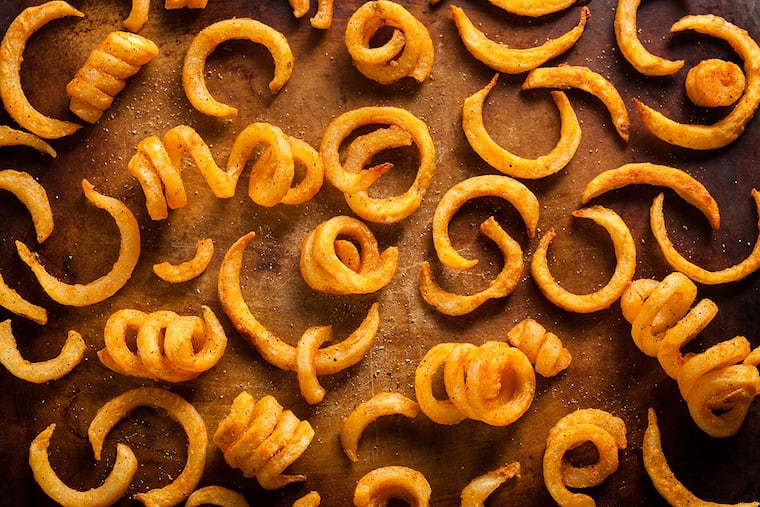Going gluten free? Dietitian shares unexpected sources of gluten
Even a trace amount of gluten is enough to cause distress to those with Celiac disease or a non-Celiac gluten sensitivity. Eating as little as 1/48th of a slice of bread can cause harm. Every crumb counts.

You have just been diagnosed with a gluten-related disorder – whether it be Celiac disease, non-Celiac gluten sensitivity. Common symptoms of these conditions include cramping, bloating, diarrhea, constipation and fatigue. These symptoms are all triggered by consuming a protein called gluten so your gastroenterologist has likely advised you to follow a gluten-free diet.
You may have been given a handout that tells you to avoid wheat, rye and barley. You start thinking about all the foods you can no longer eat: bread, pasta, baked goods, pizza, etc.
If it was only that clear cut. Mixed in with the usual suspects are all sorts of foods and products with sneaky gluten. This is important because even a trace amount of gluten is enough to cause distress to those with Celiac disease or a non-Celiac gluten sensitivity. Eating as little as 1/48th of a slice of bread can cause harm. Every crumb counts.
The U.S. Food and Drug Administration defines foods labeled "gluten free" as having less than 20 parts per million of gluten. Gluten-free food labeling is voluntary and the number of companies listing gluten free on their products is growing.
As a registered dietitian, I often see celiac patients who come to me wondering why they are not feeling better even though they claim to follow a 100 percent gluten-free diet.
So I turn into a gluten detective — contacting companies, pharmacies and restaurants to clarify if their product is really gluten free. Sometimes I test my patients by making them read food labels to find the gluten. Or I quiz servers in restaurants to make sure if an order is really gluten free.
Here are the sneaky places I've found gluten. (Pro Tip: There are many gluten-free apps that allow you to scan and check packaged food.)
Common packaged products:
Seasonings, soups, and gravies: Read the labels for unrecognizable gluten additives like hydrolyzed vegetable protein, natural and artificial flavor, dextrin, dextrin maltose, texturized vegetable protein, etc.
Candy: Beware of chocolate miniatures and licorice. The bowl of chocolate miniatures may be mixed in with other gluten-filled chocolates so instead opt for the regular sized candy bars. Licorice, sadly, contains wheat as the second ingredient.
Packaged nuts: Pay attention to extra small print at the bottom of the label that reads: "may contain shell pieces, wheat, etc."
Dining out: Even if a restaurant features an extensive gluten-free menu, you can't assume your meal will remain free from cross contamination.
French fries: Most fryers are used to cook foods other than fries, such as breaded chicken fingers, mozzarella sticks or wings. These foods could contaminate the fryer.
Eggs: Ask if the eggs are cooked on the same grill as pancakes and French toast. Did you know some restaurants add pancake batter to omelets to make them fluffy?
Pizza: Even if a pizza is labeled gluten-free, it may be made on the same pan as a regular pizza. Always ask!
Chinese/Japanese foods: Ever read the ingredients in soy sauce? Often, you'll find wheat or hydrolyzed vegetable protein in the ingredients. Ask restaurants if they offer gluten-free soy sauce. And the ever-popular California sushi roll is made with surimi (imitation crab) that contains wheat. Order sushi with tuna or salmon or other fresh fish.
Movie theater popcorn: The creamy butter on top isn't real butter, and it contains gluten.
Other sneaky sources of gluten:
Prescription medications and vitamin supplements: Many patients assume that if a doctor prescribed their medication, it must be gluten free but think again. There are many inactive ingredients in medications that could contain gluten. Ask your pharmacist to provide you with the drug company's phone number for the ingredient list or visit glutenfreedrugs.com to check prescription and over-the-counter medications. Vitamins are not well regulated so contact the company even if the label says it is gluten free.
Lipstick, lip balm, mouthwashes, and toothpaste: All of these products can contain gluten and you ingest them in small doses with every use. Check with the manufacturer to make sure they are gluten free.
The gluten-free diet is lifelong challenge. However, working with a specialist, you'll have all the tools you need to navigate your new lifestyle.
Emily Rubin, RD, LDN, is a registered dietitian at Thomas Jefferson University's Division of Gastroenterology and Hepatology.